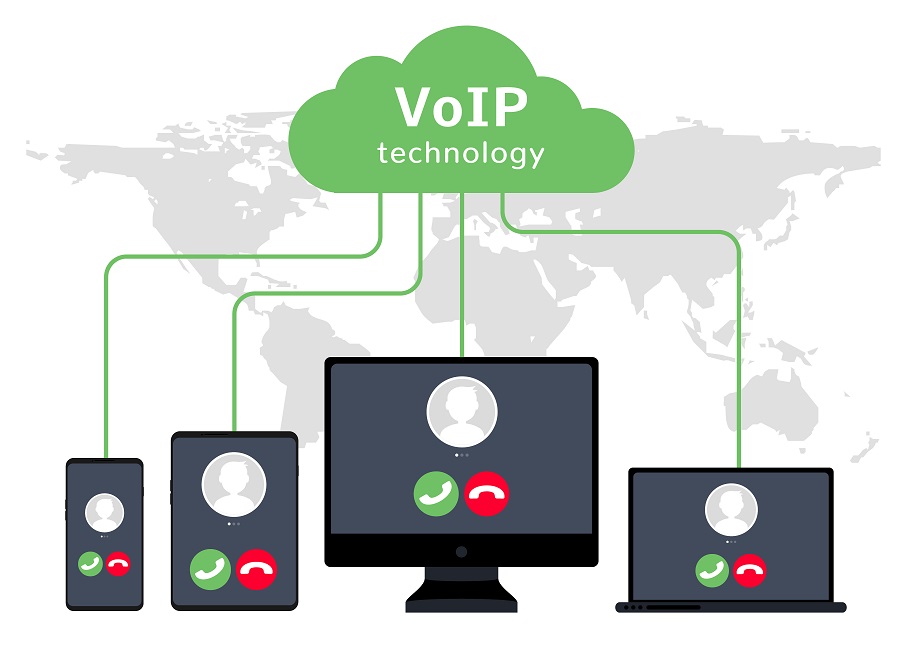Can AI improve one of the most expensive (and boring) parts of work?
Today, Gusto, a payroll and HR software platform for small businesses, rolled out a new AI “assistant” named “Gus” that promises to simplify compliance and save companies from crushing fines. Gus is powered by OpenAI’s API and allows users to ask questions such as: “How much overtime pay do I owe my employees who work in California?” Or, “What kind of paperwork do I need to complete to onboard my new employee in Texas?” These sorts of questions might sound straightforward (or make you want to fall asleep), but figuring out how to follow local, state, and federal regulations typically has a high cost for businesses—as well as workers. Historically, large businesses have employed teams of white collar lawyers, accountants, and HR professionals to ensure that they are compliant. Smaller businesses have typically relied on external experts or attempted to navigate these regulations on their own. But now many of these individuals are cautiously embracing AI-powered tools to ensure that they are following the letter of the law. Gusto CEO Josh Reeves estimates that when he and CTO Edward Kim started Gusto in 2012, “40% of companies did payroll by hand and close to 30% got fined or penalized for making mistakes every year.” But with AI, he believes businesses can more efficiently and accurately complete necessary compliance tasks. The challenge of compliance Kim’s father was a doctor with his own private practice and his mother was the receptionist. “She was the insurance biller, or she ran the payroll, and I observed her calculating the payroll taxes by hand,” he says. The state and federal tax withholding deposit schedules were often confusing, Kim remembers, which would result in fines and accrued interest. “I went back to my mom and we calculated that over the past 20 years, she paid about $200,000 in fines that are related to compliance violations,” he says. “She wasn’t trying to intentionally violate the law. She just didn’t know all the intricacies.” Darren Liddell, founder and CEO of My Money Story, a personal finance community for people of color making less than $70,000 a year, was an early tester of Gus. Liddell says that the tool gave him peace of mind while running payroll for his four employees who live in different states. “I worry about [AI] it will affect employment and work in the long term,” says Liddell. “But for now, think of AI as a way to help early small business owners. I think it could potentially be really helpful, if folks are open to it.” Angela Shapiro is an attorney who has used AI for tasks such as data analysis and evidence discovery for more than a decade. She says the idea of having a compliance chatbot is “fabulous.” Shapiro suggests that newer tools can be used by small business owners who may not have the money to outsource their compliance tasks, nor the technical knowledge needed to ensure they are following all regulations. “One of the great uses of generative AI, in my opinion, is that it does level the playing field for companies of all sizes. It offers the opportunity for someone at a mom-and-pop shop to ask questions,” says Shapiro. ‘A win, win, win’ Gusto is one of many companies now using AI to streamline route compliance tasks, centralize relevant data, and summarize regulations. For example, in 2023, EY and IBM announced the launch of EY.ai Workforce, an AI-powered HR solution that uses natural language processing to help workers complete tasks like drafting job descriptions and extracting payroll reports. Other professional services firms such as Deloitte and PwC market their AI functionalities as tools for completing compliance work. There are also AI-powered compliance software startups geared toward niche industries such as SiteDocs, which uses AI to manage safety compliance in the manufacturing sector and Filestage, which is dedicated to managing compliance for marketing teams. Compliance might seem like a dull topic, but businesses see AI in compliance as “a win, win, win,” says Reeves. He says workers win when employers follow local, state, and federal regulations. And the government wins when it doesn’t need to chase down employers for violating such regulations. Finally, he says employers win when they are able to save time and money by completing compliance work more efficiently. (Of course, a fourth “win” could also be added to this list: Businesses such as Gusto stand to benefit from the AI-driven compliance industry, as well.) One reason so many companies are flocking to gain a foothold in this space is because of the major financial incentives and potential human costs. A 2017 report from the U.S. Chamber of Commerce found compliance costs small businesses nearly $40 billion a year to ensure that they are following federal requirements and that, on average, small businesses spend $11,700 per employee per year, plus 200 hours of time on compliance. Those costs may only be increasing. In a recent

Today, Gusto, a payroll and HR software platform for small businesses, rolled out a new AI “assistant” named “Gus” that promises to simplify compliance and save companies from crushing fines. Gus is powered by OpenAI’s API and allows users to ask questions such as: “How much overtime pay do I owe my employees who work in California?” Or, “What kind of paperwork do I need to complete to onboard my new employee in Texas?”
These sorts of questions might sound straightforward (or make you want to fall asleep), but figuring out how to follow local, state, and federal regulations typically has a high cost for businesses—as well as workers.
Historically, large businesses have employed teams of white collar lawyers, accountants, and HR professionals to ensure that they are compliant. Smaller businesses have typically relied on external experts or attempted to navigate these regulations on their own. But now many of these individuals are cautiously embracing AI-powered tools to ensure that they are following the letter of the law.
Gusto CEO Josh Reeves estimates that when he and CTO Edward Kim started Gusto in 2012, “40% of companies did payroll by hand and close to 30% got fined or penalized for making mistakes every year.” But with AI, he believes businesses can more efficiently and accurately complete necessary compliance tasks.
The challenge of compliance
Kim’s father was a doctor with his own private practice and his mother was the receptionist. “She was the insurance biller, or she ran the payroll, and I observed her calculating the payroll taxes by hand,” he says. The state and federal tax withholding deposit schedules were often confusing, Kim remembers, which would result in fines and accrued interest.
“I went back to my mom and we calculated that over the past 20 years, she paid about $200,000 in fines that are related to compliance violations,” he says. “She wasn’t trying to intentionally violate the law. She just didn’t know all the intricacies.”
Darren Liddell, founder and CEO of My Money Story, a personal finance community for people of color making less than $70,000 a year, was an early tester of Gus. Liddell says that the tool gave him peace of mind while running payroll for his four employees who live in different states.
“I worry about [AI] it will affect employment and work in the long term,” says Liddell. “But for now, think of AI as a way to help early small business owners. I think it could potentially be really helpful, if folks are open to it.”
Angela Shapiro is an attorney who has used AI for tasks such as data analysis and evidence discovery for more than a decade. She says the idea of having a compliance chatbot is “fabulous.”
Shapiro suggests that newer tools can be used by small business owners who may not have the money to outsource their compliance tasks, nor the technical knowledge needed to ensure they are following all regulations.
“One of the great uses of generative AI, in my opinion, is that it does level the playing field for companies of all sizes. It offers the opportunity for someone at a mom-and-pop shop to ask questions,” says Shapiro.
‘A win, win, win’
Gusto is one of many companies now using AI to streamline route compliance tasks, centralize relevant data, and summarize regulations.
For example, in 2023, EY and IBM announced the launch of EY.ai Workforce, an AI-powered HR solution that uses natural language processing to help workers complete tasks like drafting job descriptions and extracting payroll reports. Other professional services firms such as Deloitte and PwC market their AI functionalities as tools for completing compliance work. There are also AI-powered compliance software startups geared toward niche industries such as SiteDocs, which uses AI to manage safety compliance in the manufacturing sector and Filestage, which is dedicated to managing compliance for marketing teams.
Compliance might seem like a dull topic, but businesses see AI in compliance as “a win, win, win,” says Reeves. He says workers win when employers follow local, state, and federal regulations. And the government wins when it doesn’t need to chase down employers for violating such regulations. Finally, he says employers win when they are able to save time and money by completing compliance work more efficiently. (Of course, a fourth “win” could also be added to this list: Businesses such as Gusto stand to benefit from the AI-driven compliance industry, as well.)
One reason so many companies are flocking to gain a foothold in this space is because of the major financial incentives and potential human costs.
A 2017 report from the U.S. Chamber of Commerce found compliance costs small businesses nearly $40 billion a year to ensure that they are following federal requirements and that, on average, small businesses spend $11,700 per employee per year, plus 200 hours of time on compliance. Those costs may only be increasing. In a recent Fast Company article, Gusto’s Tomer London calls attention to rising regulatory costs, which he refers to as “compliance inflation.”
According to a 2023 paper by Francesco Trebbi, professor of business and public policy at the UC Berkeley’s Haas School of Business and Miao “Ben” Zhang, assistant professor of finance and business economics at the USC Marshall School of Business, the average U.S. businesses spends between 1.3% and 3.3% of its total wage bill on regulatory compliance.
Then there’s also the tolls that occur when employees are not treated or compensated fairly. Those can be harder to quantify for employees, but employers do face fines for a lack of compliance. The Occupational Safety and Health Administration can fine employers up to $16,131 for serious violations in which the physical safety of workers is threatened. And in the past year, several companies have been forced to pay millions in fines over workplace safety and labor rights violations.
Keeping compliance human
Though AI tools are currently disrupting the compliance industry, there’s still a critical role for humans in these processes, experts say. Shapiro, for example, stresses the importance of always having a human in the loop. “We’re nowhere near the point where generative AI can replace the intellectual work product of an attorney at this stage,” she says.
“Artificial intelligence is one of the most important technological trends of our time and it will lead to widespread change,” writes Moritz Homann, managing director of corporate compliance at EQS Group, a compliance software company in a blog post. “For the compliance sector, it will bring numerous advantages, though also challenges.”
To better understand these challenges, I emailed Daniel Ho, a professor of law and computer science at Stanford University who has conducted extensive research on corporate applications of AI and AI’s tendency to produce untrue results, known as “hallucinations.”
“I think there are many affirmative use cases of AI to improve legal compliance, but one of the frontier questions is that of legal hallucinations, namely the propensity of large language models to make up facts, laws, and opinions,” says Ho before pointing to his research which has determined that popular AI-powered legal products hallucinate often.
A 2024 paper, authored by Ho and others, suggests that the “revolutionary potential” of large language models is “threatened” by the presence of hallucinations. “LLMs hallucinate at least 58% of the time, struggle to predict their own hallucinations, and often uncritically accept users’ incorrect legal assumptions,” Ho and his colleagues write. “We conclude by cautioning against the rapid and unsupervised integration of popular LLMs into legal tasks.”
Attorney Jordan Turk believe’s in AI’s potential to improve the compliance process. As a legal technology advisor for Smokeball, a practice management system for attorneys, she has seen many lawyers successfully use AI to draft emails and process intake paperwork.
Still, she says that at this point, lawyers should still treat AI as if it were “a bumbling summer associate.”
“Generative AI is so smart and wants to please you, but at the same time, you would never trust its output completely,” says Turk. “You would always double check it.”






















